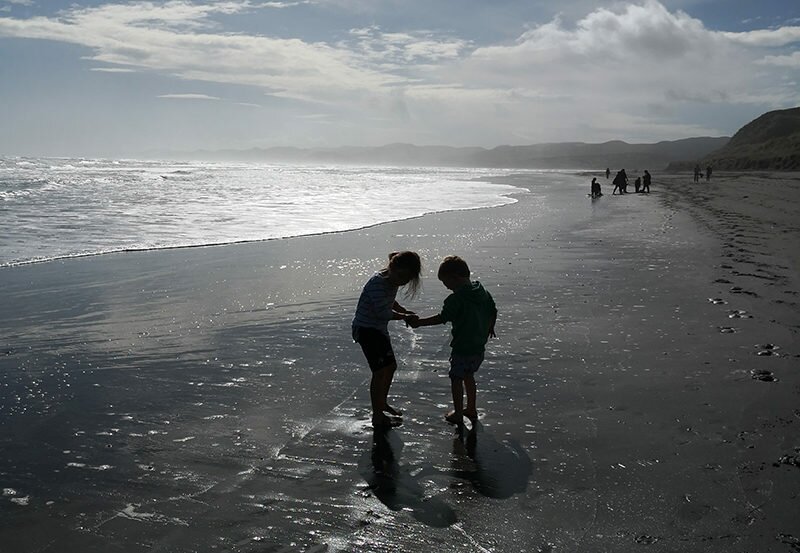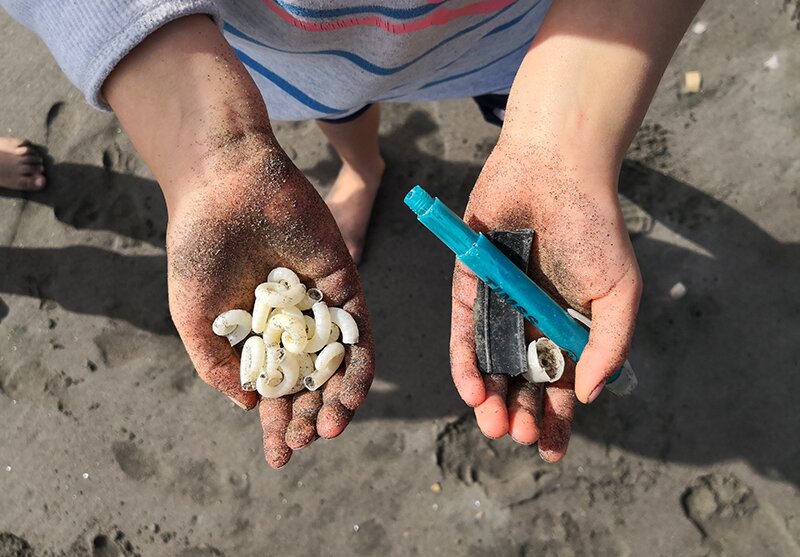So, Plastic-free July is over for another year. I got the distinct impression over on social media that interest in the Plastic-free July movement is growing, yay! 😄 And no wonder, with more and more horrifying impressions of plastic pollution around the world being shared in the media. I stumbled upon this mini-video on Instagram the other day and found it so confronting that my winter-blues-induced-apathy which I’ve been struggling with for the past wet month (ok, two months) was shaken off by emotions of horror, disgust, shame, and outrage.
Posted by @aaroncharart on Instagram, he writes: “We are in trouble… WTF!!!
What did we do or not do to get to this place…this is REAL…”
While it is all too easy to react to such a scene with despair:
“It’s too late! 😩”
“The problem’s too big now 😩”
“What could I possibly do that could fix this? 😩”
“The future is doomed 😩”
…or anger:
“Why aren’t we doing something about this? 😡”
“Companies should be held responsible for this 😡”
“Governments should be legislating against this 😡”
…here are the two things that I noticed and took away from this footage.
1. “Great things (good and bad) are done by a series of small things brought together.” – Vincent van Gogh
The waves of rubbish, while seemingly endless, are actually made up of lots of little pieces of plastic. If you look closely, you can see that much of that plastic rubbish is comprised of commonly used plastic packaging – the kind of plastic packaging almost all of us (except perhaps Béa Johnson!) engage with every day in some way: plastic water bottles, milk cartons, juice bottles, plastic lids, takeaway containers… I saw a plastic jandal in there, and a shoe! There’s really nothing unfamiliar to any of us in those waves, nothing that is particular to the Caribbean and not New Zealand, nothing in there that we couldn’t possibly have contributed ourselves from all the way down here in the antipodes. While it’s true that legislation can effect significant changes because actions are enforced from above, at the end of the day all that rubbish has been generated by us, the consumers. Companies only make things that sell, and the mere fact that companies are STILL making almost everything in plastic or wrapped in plastic signals that we consumers are accomplices in this crime against the planet. Personally, I’m proud to say that I’ve got to the point where I don’t buy or use plastic water bottles, plastic milk cartons, or juice bottles. But if I’m honest (which I try to be), I do still end up with the occasional plastic takeaway container. I have a pair of plastic crocs, and my children have them too. I wrap my son’s bottom in plastic nappies too (something I’m not proud of but I accept).
I believe that if everyone reduced their plastic consumption as much as I have these past couple of years, we wouldn’t have such a monstrous problem on our hands (possibly). But that doesn’t absolve me from the responsibility of having contributed to the global disaster that is plastic pollution. The plastic we are currently drowning in includes all the plastic ever made – including my childhood toothbrushes, H2Go pump bottles I drank from as a teenager, and the plastic nappies my own mum wrapped my bottom in when I was little. Therefore, no matter how much further ahead than others I am on the journey towards zero-waste living, I’m still responsible. If you’re feeling insecure about your own shortcomings when it comes to quitting plastic and/or low-waste living, then I assure you that no zero-waster on the planet can feel smug about this one.
But if the problem lies with all of us, then so does the answer.
It’s easy to think that declining a plastic fork and eating with your hands won’t really make enough of a difference to matter, but it does. There are plastic forks in this video, I guarantee it. If the little daily habits of each one of us 7 billion people can create a monster like this, then I believe the remedy can simply involve little daily efforts from each one of us 7 billion people too. Why wait for legislation? And why wait for July 2019 to roll around? It’s August 2018 now and every day we can do something to reduce the amount of plastic in circulation.
2. The problem is everywhere, even where we don’t see it.
The above video clip was taken in the Dominican Republic, a tropical paradise in the Caribbean. If you Google “Dominican Republic” your search will result in thousands (millions?) of images like this one:
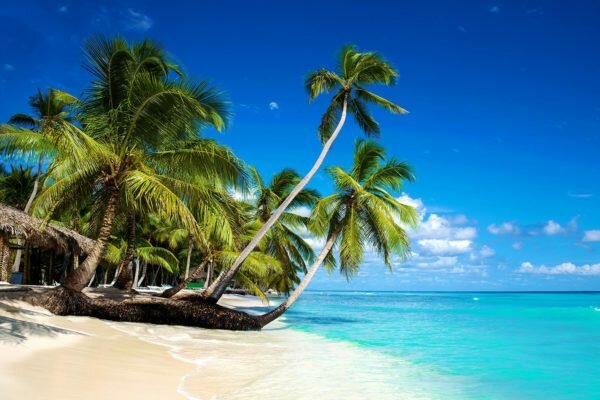
…and if you look really hard, maybe just one image like this one:
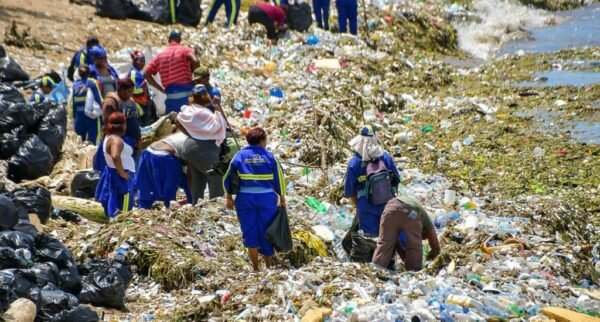
So, which one is the truth?
If the Dominican Republic is anything like Samoa (where I recently holidayed and it was ama—-zing!) I expect that both images are true. The bottom image and the video clip above are evidence of the epic pollution and clean-up required after a devastating storm in the Caribbean. So it would be easy to dismiss those images as aberrations. Unfortunately, what we deep down know is that all that rubbish was already around before the storm, and the only reason we were suddenly horrified into noticing was that the storm pushed all of it together and into full view where it couldn’t be ignored.
A couple of months ago I arrived in Samoa for my first-ever tropical island holiday with my sister. It looked just like every beautiful image we had seen on the internet. It was lush, green, and unspoilt. The water was so clear you could see your toenails a metre below the surface! Although I tried my hardest to avoid bottled water and plastic straws (it was really hard to do!) I could understand that tourists relaxing in the hotel restaurant or chilling on the beach might be forgiven for thinking their plastic rubbish just vanished into thin air when they were done with it; the environment looked so pristine.
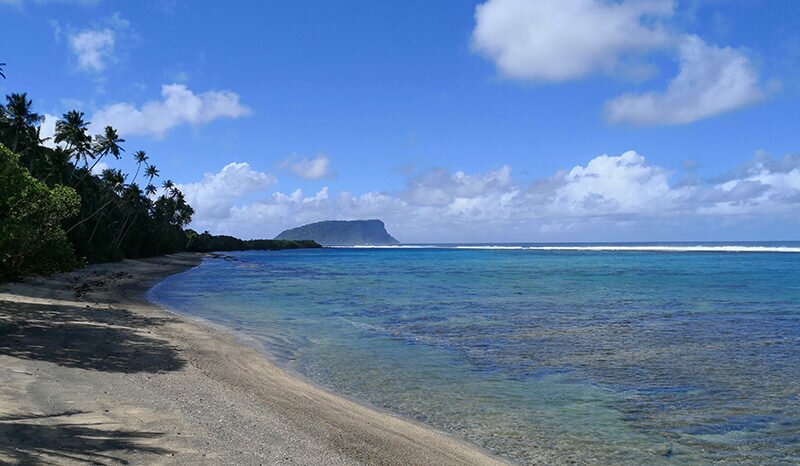
But if they had just made a tiny scratch below the surface they might have seen, like I did, that our plastic rubbish was actually everywhere. Wherever the locals had mowed down the grass with their weed-eaters, the ground was littered with plastic rubbish – the manicured roadsides were white with the sprinkled shreds of styrofoam containers. Up at the top of the beach, at the feet of the coconut palms, there were glades of rubbish tucked in behind the bushes – plastic water bottles, takeaway containers, straws, plastic cutlery, and who knows how old they were? The lush vegetation was hiding it so well, making it so easy for any of us to choose to believe that Samoa was spared from the scourge of plastic pollution that is choking other parts of the world. It made me realise that if we need visual evidence to motivate us all into action, it will be too late when it comes. We need to be motivated to take action by our sense of responsibility, our integrity, even our guilt, knowing that the problem of plastic pollution is real and dreadful, even if we can’t see it with our own eyes.
I brought this conviction home with me, and when I visited Wainui beach out at Raglan a couple of weekends ago I decided to challenge my whole family to #take3forthesea during our walk up and down the beach – even though I doubted we’d be able to find three pieces of plastic each. Unfortunately, we finished our walk with about 30 pieces of plastic between us – including a fishing line tangled in seaweed (we couldn’t separate the two). My husband was really shocked. New Zealand beaches look so unspoilt, it’s too easy for us to believe that we don’t have a pollution problem. It was a reminder to both of us that while some of New Zealand’s rubbish is ushered by the currents out to the middle of the Pacific Ocean¹ so we don’t have to look at it, there is still much plastic pollution left behind – if we simply decide we want to notice it.
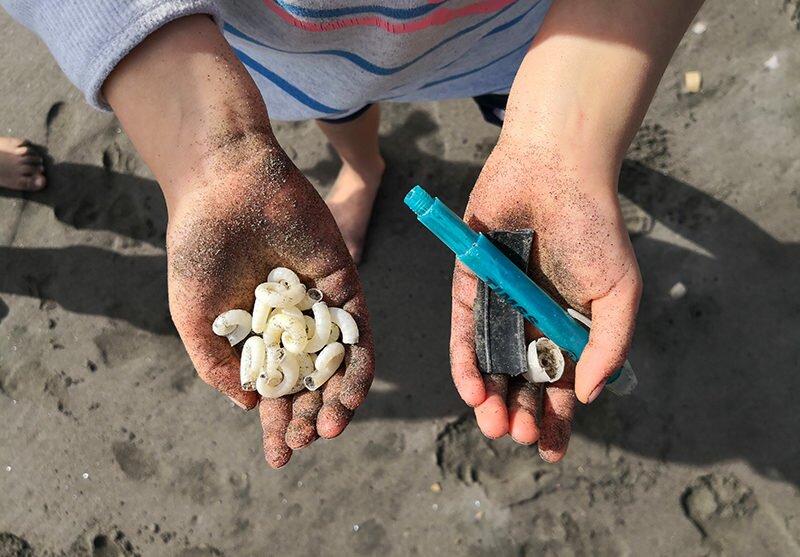
Believing in the problem of plastic pollution is a decision, not a realisation. We need to choose every day to take action; to change our habits for the better, to clean up our own mess, to simply notice there’s a problem. And I believe every choice I make to do the right thing does make a difference, no matter how small I am or how tiny my impact is. It’s August 2018, and it’s the perfect time to say ‘no’ to plastic!
¹ Stuff article: “Researchers map plastic patch bigger than Greenland floating in the South Pacific” – July 2017 (make sure you read the first line!)
